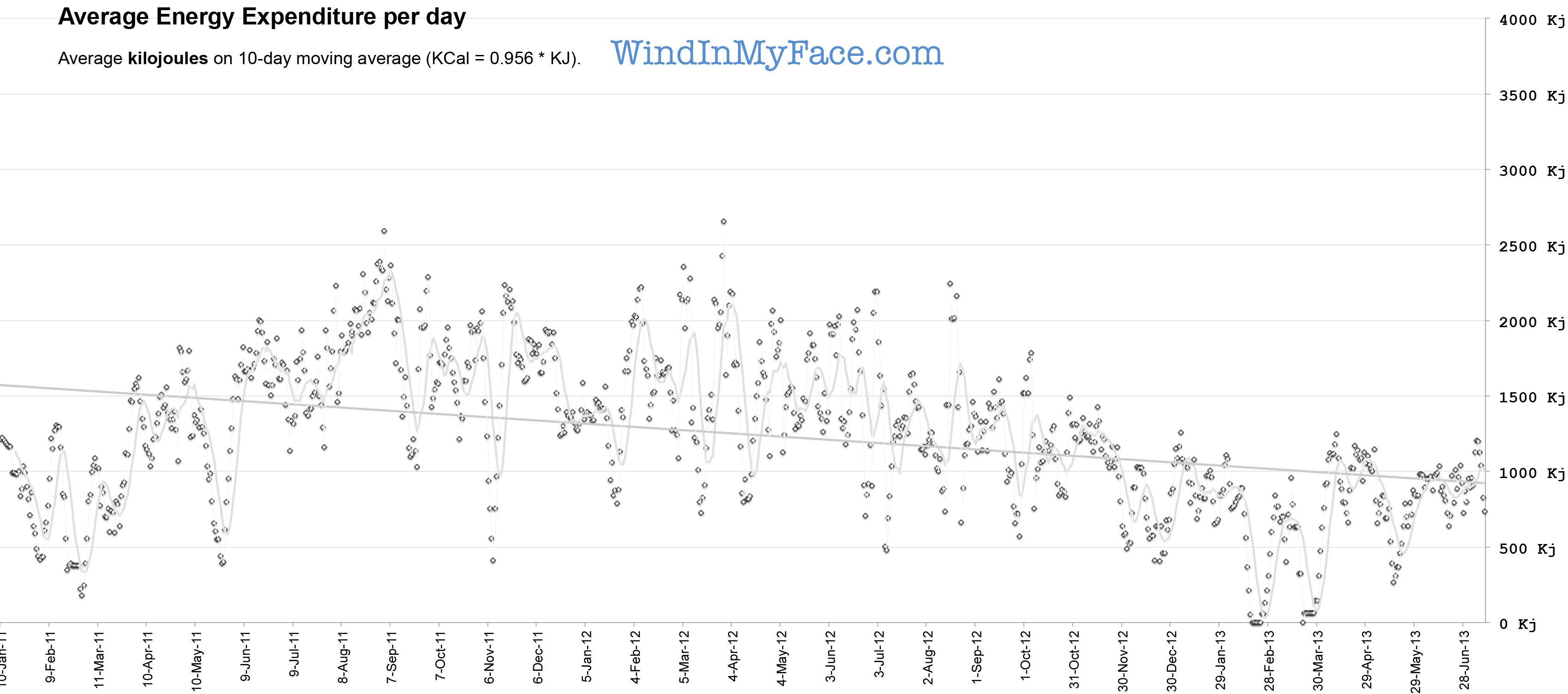Everest Challenge Training — Calories Burned
Related: bicycle power meter, Everest Challenge, exercise, hard core, Rides, SRM, training
See the weight loss graph, and note that the weight-loss trend shows little short-term correlation with the calorie expenditure pattern (below).
Ongoing training burns substantial calories even when not exercising, by a change in the body’s metabolic rate, e.g. by repair and increased metabolic requirements of muscle tissue, which “idles” with far higher metablic requirements than fat tissue.
In other words, getting more fit gets the weight down, even if calories burned dips for days or a week. You get a “free lunch” sometimes! Which is why staying active and fit is far better than slumping into 20 pounds overweight.
Keep reading after the chart below.
Kilojoules expended
For calories (KCal), multiply by 0.956— almost the same. The SRM Power Control 7 watt meter reads kilojoules.

Assumed muscular efficiency of 25%
Figures in kilojoules (multiply by 0.956 for kilocalories)
Metabolic efficiency during exercise
Burn whatever you want, the body is sure to become more and more efficient and lose less fat than might be expected. Evolution did not allow us to die by simply burning off fat willy-nilly.
An unconditioned athlete might have 20% efficiency (energy metabolized vs mechanical energy produced), while a world class cyclist might approach 27-28%. The graph assumes 25% efficiency, the default used by the SRM Power Control 7 corresponding to a quite high level of fitness. Unfortunately, I am very efficient.
Calories burned post-exercise
To repair itself and to build new muscle, additional energy is required. Thus, under harder training, actual energy expenditure exceeds what is burned while training.
Refueling
Refueling after a hard workout is critical: to maintain a high level of exertion, eat immediately after a ride, so that muscle glycogen stores are refilled. Waiting even 30 minutes is a Bad Idea. Scarf something, anything, within 5 minutes, even a candy bar or bag of chips if that is all you have. But it’s better to eat something witih an immediate glucose source, such as a baked sweet potato, or an energy gel, but no more than 100 calories worth right away. Then eat a full meal within an hour.
For easy aerobic workouts, refueling is much less of an issue, since you haven’t depleted muscle glycogen stores.



